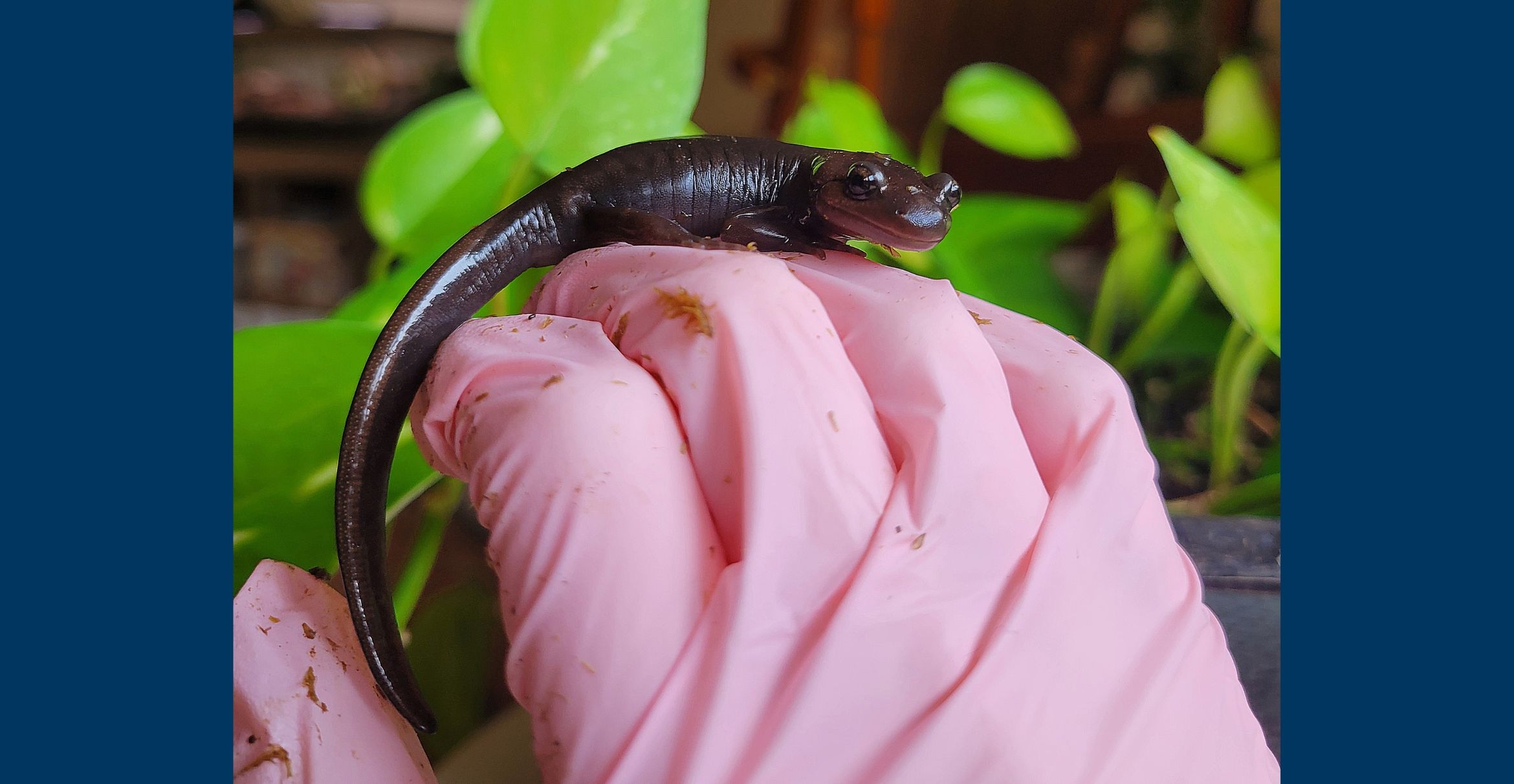
From forest to living room: How Christmas trees can transport wildlife across states
When a local family brought home a farmed Christmas tree to brighten their holidays, they never expected to find a surprise hidden among the branches: a tiny northwestern salamander, over 300 miles away from its natural habitat. The salamander, nicknamed Noel, hitched a ride on seasonal Christmas tree cargo, turning the family’s festivities into a lesson of the potential risks of a cherished tradition.
Noel is far from the first salamander to crash a holiday celebration, as UCSB undergraduate Brooklyn Stone discovered while researching the trend for a class with faculty member Rebecca Chenoweth. Every year there are reports of northwestern salamanders transported from coast to coast as millions of Christmas trees are shipped across state lines. If these patterns continue, scientists are concerned these amphibians are capable of more harm than good to local ecosystems.
The journey of a Christmas tree hitchhiker
The Christmas tree industry generates billions of dollars annually while supporting a beloved holiday tradition. Despite fir farms being in every state, Oregon alone sells, on average, 4.5 million trees a year, which supply sale pop-ups all over North America. That’s 30% of all purchased holiday trees grown in one state.
“Over 31,000 acres of Oregon land are dedicated to farming these trees,” Stone said, “a lot of which overlaps with the Northwestern Salamander’s native range, putting them at high risk of getting mixed up with the holiday excitement.”
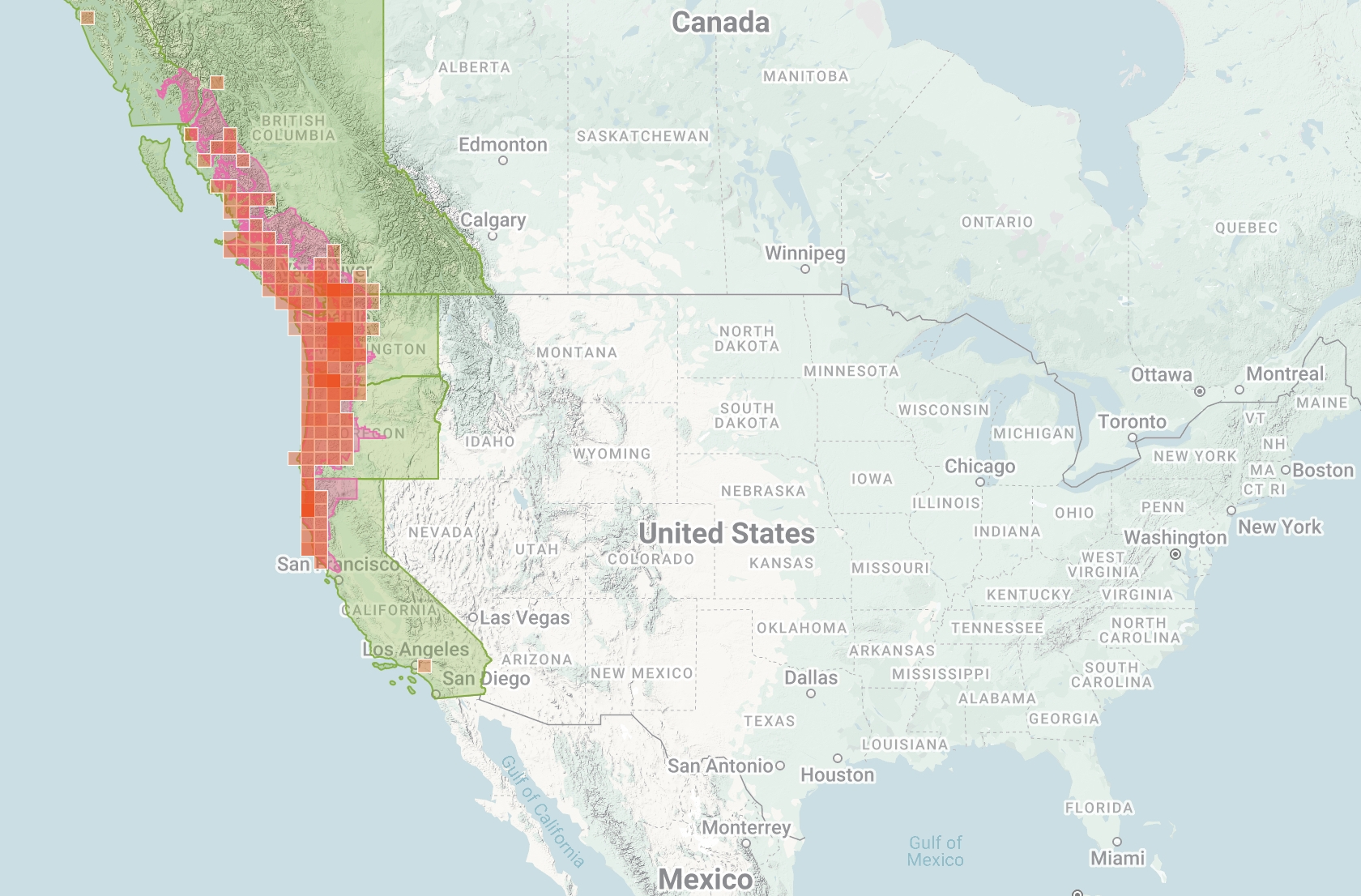
Luckily, these salamanders are fossorial, meaning they spend most of their lives underground. They primarily come to the surface during their breeding season in February-April, missing the holiday season and decreasing their risk of inadvertently ending up on a long-haul truck headed for faraway cities.
However, they can be active throughout the year during rainy nights, often using logs as a refuge. And the Christmas tree harvest begins in early November, just as average rainfall begins to increase in Oregon. This makes the trees from the Pacific Northwest more likely to harbor amphibian stowaways, since this region doesn’t ice over in winter like some other areas of the country.
Christmas trees are cut and piled up prior to being loaded on the truck, and salamanders may use them as a temporary refuge. “And while they’re hanging out in there, they pick up the trees, toss them onto a truck and drive away,” said Chris Evelyn, a herpetologist at UCSB’s Cheadle Center for Biodiversity and Ecological Restoration. These trees transported across the United States, and even to Mexico, spread more than holiday cheer: they spread hitchhiking pests and wildlife that can completely alter existing ecosystems on their route.
Not as innocent as they look
When you think of the invasive species doing the most harm to our environment, salamanders likely aren’t the first animals to come to your mind. However, even these seemingly harmless, slow-moving, dirt-loving amphibians can have a lasting effect on ecosystems, from changing evolutionary relationships to introducing lethal diseases.
Herpetologists are all too familiar with this pattern. Take, for instance, the threatened California tiger salamander. Around 60 years ago barred tiger salamanders came to California from Texas and now threaten the integrity of their West Coast counterpart through hybridization.
Being closely related, the Texan species can breed with the native species, creating hybrid offspring. Typically, hybridization is an evolutionary dead end as these hybrids often cannot sustain a population. Many, like the mule, are actually sterile.
But the hybrid salamanders have the opposite problem. Through a phenomenon called “hybrid vigor” their offspring are surprisingly more resilient than either parental species. The scientific community has mixed opinions about this rare occurrence. “On one hand, some scientists argue that since these hybrids are favored by natural selection, they ‘improve’ the existing species,” Stone said. “However, this argument fails to consider that it might cause the extinction of the native California tiger salamander altogether.”
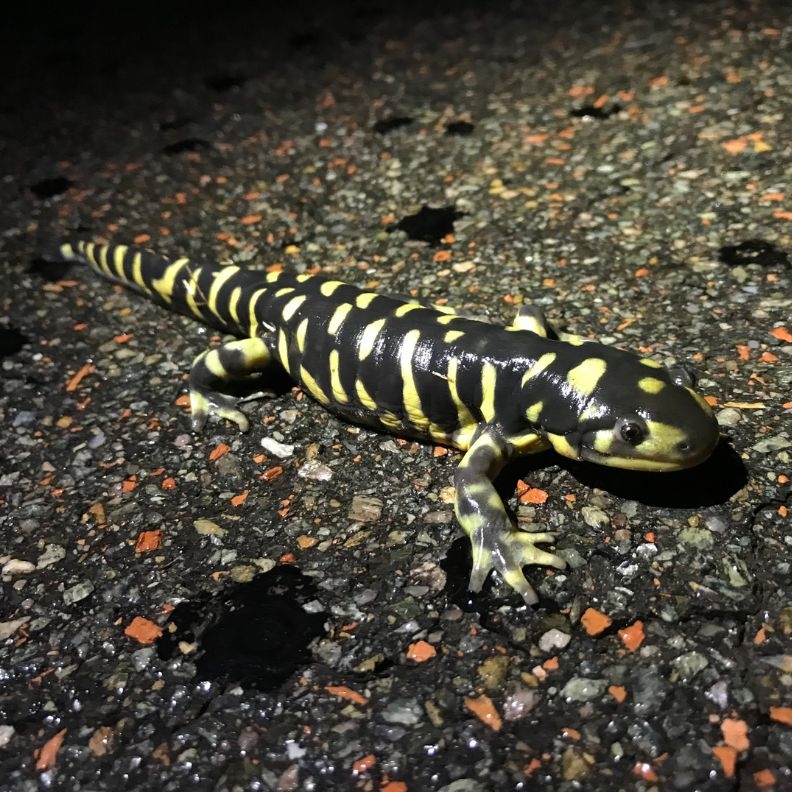
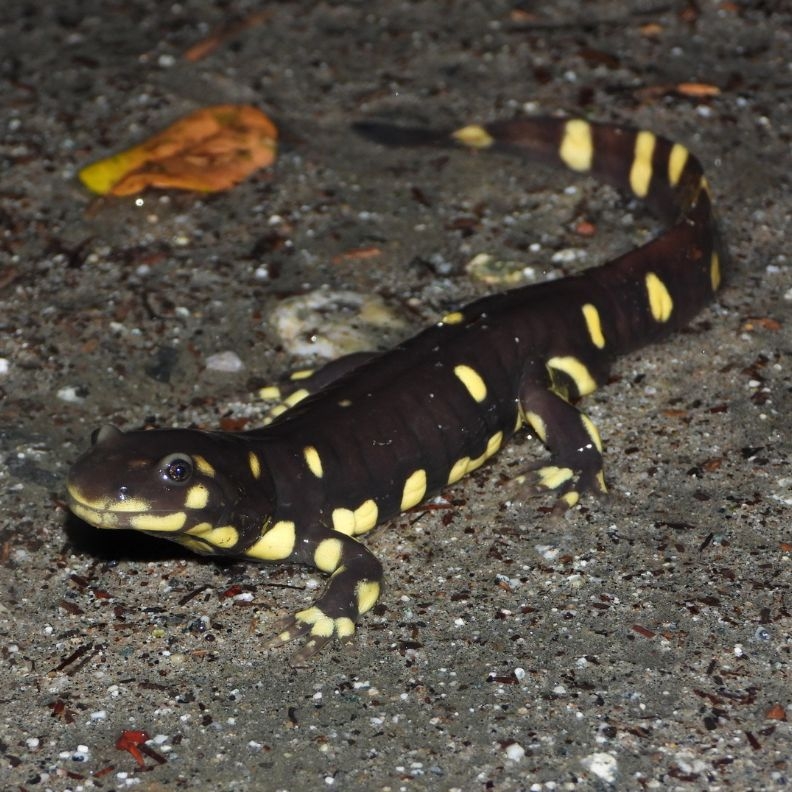
It also doesn’t account for the domino effect on the rest of the ecosystem. One study found that the hybrid salamander larvae are voracious predators, preying on and competing with the native species’ young. Their presence also dramatically reduces the abundance of two other native amphibians: Pacific chorus frogs and California newts, which could change food web dynamics. Ecologists have expressed concern that the introduction of the northwestern salamander — like our little Christmas crasher, Noel — could cause this story to play out elsewhere, as it is in the same family as the invasive barred tiger salamander.
The accidental transport of wildlife also introduces diseases, which is especially urgent to amphibian conservation today. Amphibians are experiencing the most concerning decline of any vertebrate group, surpassing mammals, birds, reptiles and fish. With 43% of amphibian species in decline and 32% threatened with extinction, their protection is more important now than ever.
“There are species that appear to be extinct that we barely knew anything about and likely others that have gone extinct in recent decades before they were even known to science,” Evelyn said.
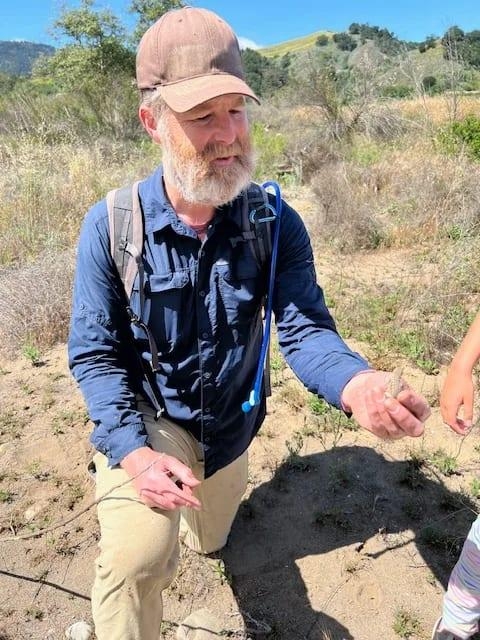
Chris Evelyn
Chris Evelyn is a herpetologist with an interest in the evolution of diversity in amphibians and reptiles. His research focuses on speciation, morphological evolution and ecological patterns across different spatial scales, from microhabitat to biogeography. Chris is also passionate about outdoor education and conservation from his time teaching environmental education on Santa Catalina Island to current cooperative projects with state and federal agencies.
A leading cause of this decline is the fungal disease Chytridiomycosis, which is causing the most dramatic loss of vertebrate biodiversity in recorded history. This condition has affected more than 700 amphibian species. It has contributed to the threatened status of almost 400 taxa, possibly causing the extinctions of 90 species around the world.
The main pathway that this deadly agent spreads is through cargo and the exotic pet trade. In other words, transporting nonnative animals to new areas. Amphibians infected with chytrid often don’t show symptoms, yet can still spread this fungus to other, more susceptible species. If salamanders stuck in Christmas trees carry this pathogen, it could add another way for this devastating disease to spread.
Noel may have brought company on his road trip since Christmas trees have a history of carrying other inhabitants even more destructive than salamanders: bugs. Unlike salamanders who get picked up and transported as adults, insect hitchhikers often travel as eggs.
The implications depend on the type of insect. Christmas tree cargo introduced invasive Western yellowjacket wasps in Hawaii that feasted on local insects, disrupting pollination and depleting food for local birds. Other insects have brought plant diseases or become a nuisance themselves. The spruce beetle is one of the most destructive pests transported this way and has destroyed 3 million spruce trees during its peak outbreak in the 1990s.Unfortunately, the list continues. But the Christmas tree tradition isn’t all doom and gloom.
Hope for the holidays
Purchasing live Christmas trees is still considered the most environmentally friendly option compared to the growing preference for fake trees, although both have their advantages and disadvantages. “There are Christmas tree farms in every state,” Stone said. Not only does purchasing nearby support local businesses, but it’s far more sustainable and eco-conscious. A shorter trip means fewer carbon emissions, and a smaller chance that wildlife ends up far outside its native range.
It’s also a wise idea to inspect your tree for any accidental guests. Currently, there aren’t many preventative measures taken to reduce transporting wildlife beyond shaking down the trees before loading them onto the truck, which leaves plenty of opportunity for critters to come along.
If you do find a Christmas tree hitchhiker, contact your local wildlife center, and never release an animal that you are unfamiliar with into the wild. The family who found Noel brought him to the Santa Barbara Wildlife Care Center, which contacted local salamander expert Chris Evelyn. “I had read about this issue, but I had never experienced it,” he said. “So when the family called, I knew right away what was going on.”
Since none of them knew exactly where Noel came from, they decided not to release him back into the wild. Today, he lives happily with Evelyn as an educational animal.
This story was primarily written by Brooklyn Stone.



